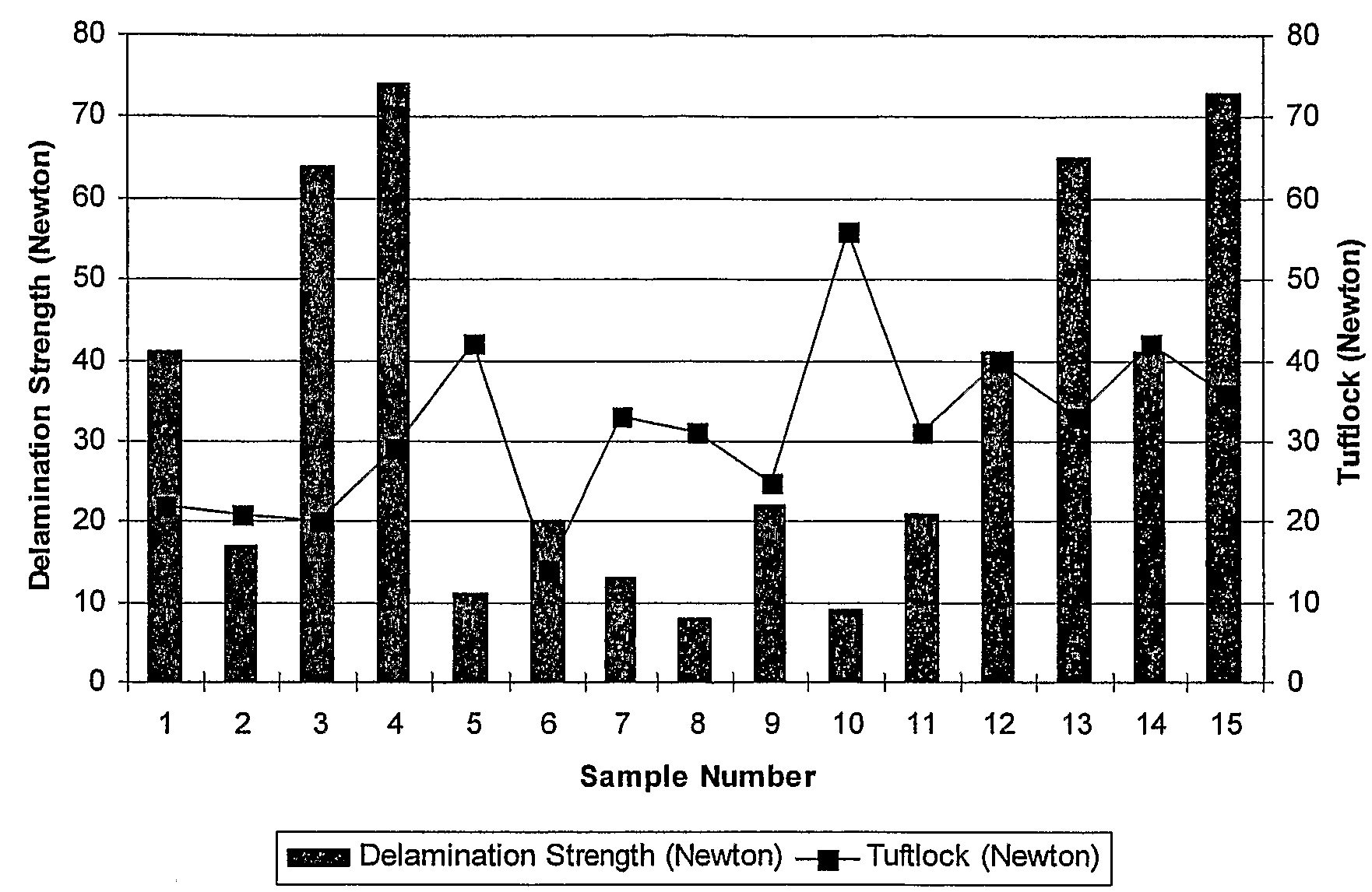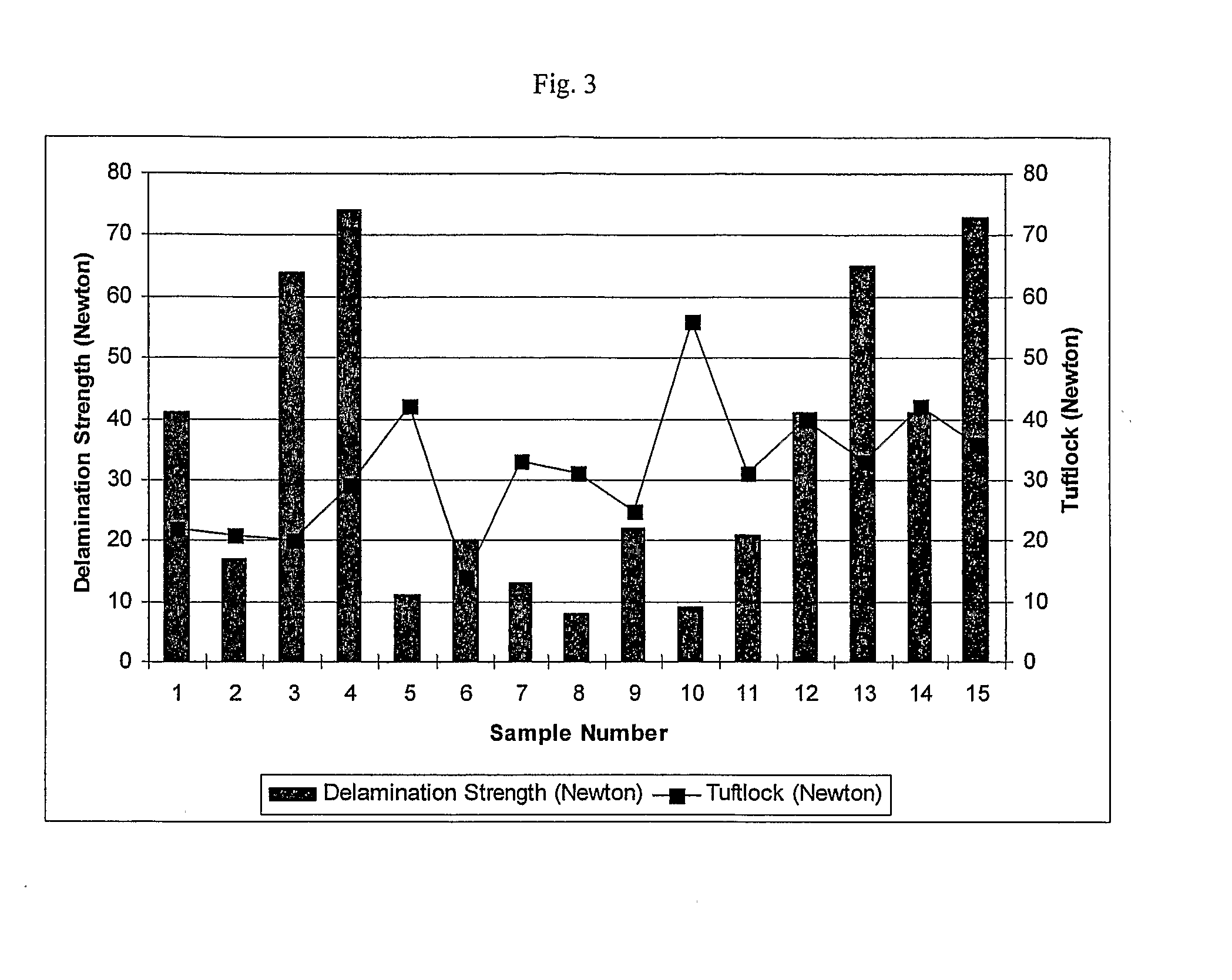Compositions and Aqueous Dispersions
a technology of aqueous dispersions and compositions, applied in the field of aqueous dispersions, can solve the problems of reducing the service life of typical latex adhesive backing systems, and reducing the recyclability of carpets
- Summary
- Abstract
- Description
- Claims
- Application Information
AI Technical Summary
Benefits of technology
Problems solved by technology
Method used
Image
Examples
examples
[0074]A precoat was applied to a sample of tufted carpet, using a polyolefin dispersion, referred to as TCR 002. The polyolefin dispersion comprised a base polymer / stabilizing agent mix formed from AFFINITY™ 8200 / PRIMACOR™ 5980i in a 70% to 30% blend (by weight), both of which are available from The Dow Chemical Company (Midland, Mich.). The tufted carpet had polypropylene pile and polypropylene backing. The thermoplastic polymer, AFFINITY™ 8200, as delivered consisted of soft, flexible beads. PRIMACOR™ 5980i, as delivered consisted of hard, spherical beads.
[0075]A 25 wt. % KOH stock solution was prepared to neutralize the surfactant. The final density of this solution was 1.25 g / ml at 20° C. This preparation is shown in Table 1 below:
TABLE 1Preparation of a 25 wt. % KOH stock solution.MaterialWt. (g)Wt. Fraction45 wt. % KOH555.00.555Deionized water445.00.4451000.01.000
[0076]The polymer, AFFINITY™ 8200 was to be fed through a primary solids feeder. This feeder consisted of a Schenck...
PUM
| Property | Measurement | Unit |
|---|---|---|
| volume percent | aaaaa | aaaaa |
| particle size | aaaaa | aaaaa |
| temperature | aaaaa | aaaaa |
Abstract
Description
Claims
Application Information
 Login to View More
Login to View More - R&D
- Intellectual Property
- Life Sciences
- Materials
- Tech Scout
- Unparalleled Data Quality
- Higher Quality Content
- 60% Fewer Hallucinations
Browse by: Latest US Patents, China's latest patents, Technical Efficacy Thesaurus, Application Domain, Technology Topic, Popular Technical Reports.
© 2025 PatSnap. All rights reserved.Legal|Privacy policy|Modern Slavery Act Transparency Statement|Sitemap|About US| Contact US: help@patsnap.com



